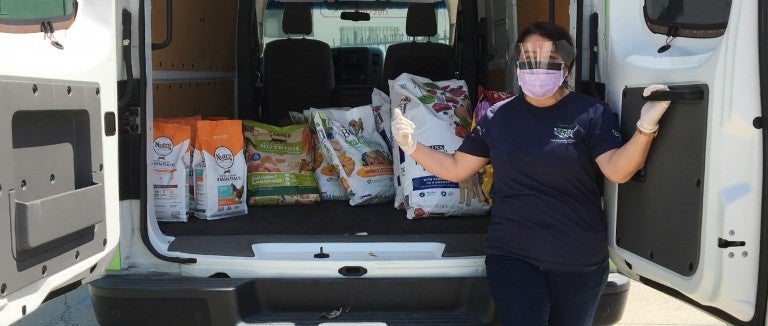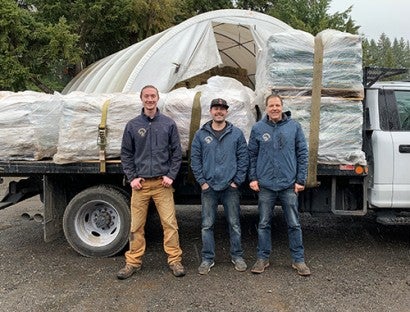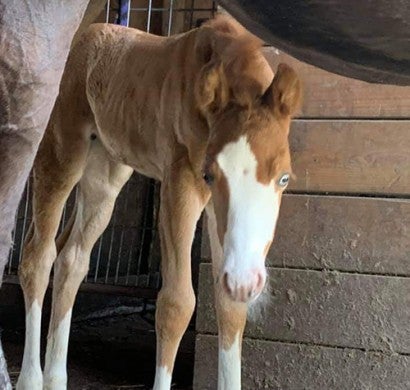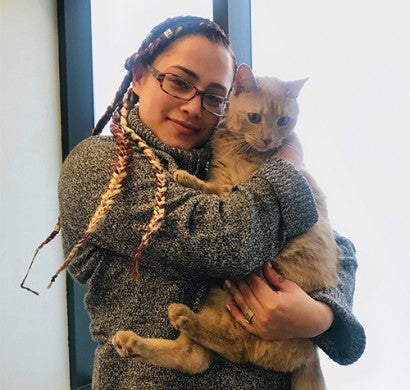The stories reach Amanda Arrington via text message these days: The immunocompromised hospital worker in Milwaukee who brought her spunky dog, Rusty, onto her porch to give a socially distant thanks when a Pets for Life team member dropped off dog food. The veteran with four dogs—including a parvovirus survivor—who was so appreciative of receiving food for his furry family in Washington state. The man from Los Angeles who sent a teary message of gratitude for the lifesaving eye surgery Pets for Life facilitated for his cat, Bombay, adding that he hoped other families would receive similar services.
As senior director of the Humane Society of the United States’ Pets for Life program, Arrington is used to stories like these. In regular times—non-pandemic times—Pets for Life works in underserved communities around the country, providing veterinary services and pet supplies at no cost to families who can’t otherwise access them. During the coronavirus crisis, the work has shifted. With states deeming spay/neuter services as non-essential, Arrington’s team pivoted to providing families with pet food and supplies instead. The work looks different, with contactless drop-offs and exchanges via text message rather than the door-to-door, face-to-face approach that Pets for Life has used for more than 10 years. The goal, though, is the same: to keep pets in their homes, with the families who love them.
That goal drives the HSUS’s COVID-19 response, says Kimberley Alboum, director of shelter outreach and policy engagement. Pets bring us comfort and joy, especially in crises. “The worst thing could be for people to have to give their pets up over veterinary care or food when we as an industry have the ability to supply that,” Alboum says.
During the pandemic, Alboum’s team—which manages the HSUS Shelter and Rescue Partner program—has pivoted from arranging pet transports and facilitating shelter mentorships to ensuring that communities have the resources they need to support pets and their families.
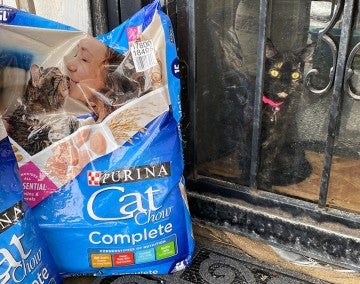
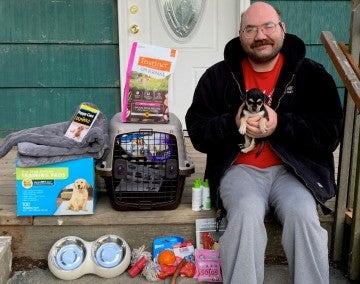
Thanks to a generous donation from the Alex and Elisabeth Lewyt Charitable Trust and funds from HSUS supporters, the HSUS Companion Animals team and state directors can send funds to the areas that need it most. “What we’re looking for are shelters and organizations that are actually working to keep owned pets in the community in their homes,” says Alboum. While the HSUS Pets for Life team and the Fund for Animals’ Rural Area Veterinary Services program work directly with clients, answering pleas for food and essential veterinary care, the grants go to organizations that can help community members struggling due to lost wages and economic insecurity.
Although cat and dog rescues tend to be in the public eye, “not everybody thinks about horse rescues having the same needs,” says Cheryl Jacobson, deputy director of the HSUS equine protection team. Early on, Jacobson’s team and a group of volunteers reached out to the 440 member organizations of the HSUS-supported Homes for Horses Coalition, checking in to see what they needed. Rescues reported a dramatic drop in donations and the cancellation of spring fundraising events that would have gotten them through the year.
“With the COVID-19 emergency grants, we’re really trying to focus on the organizations that have safety net programs that are trying to keep horses in homes,” says Cindy Gendron, HSUS project manager for animal response, care and sanctuary. Larger grants go to groups like Days End Farm Horse Rescue in Maryland, which in April began receiving calls from anxious horse adopters who’d lost their jobs and couldn’t afford hay. Rather than take the animals in and fill up space that could save homeless horses, Days End provides food and boarding support to help keep horses with their people.
In some ways, the crisis hit at a time when the sheltering community was prepared for it. Over the past 10 years, says Alboum, “the industry—the shelters, the rescues, the national groups—have worked so hard on messaging: spay/neuter, spay/neuter, spay/neuter. And guess what? It worked.” Many shelters had a manageable number of animals and got them into foster families quickly, or required only a small staff to continue operating. Cities with Pets for Life mentorship partners had already developed close ties with their communities, and they could build on that trust to expand services and connect with residents in need.
Arrington and Alboum both see the Pets for Life model as the way forward: trusting people to act in the best interests of their pets, and giving them the tools they need to do so. Letting shelters and rescues serve as community hubs, offering resources to local families. Many organizations embraced this model during the crisis—and found that it worked. “I don’t think we will be able to—and I don’t think that we’ll want to—turn our backs on those lessons that we’ve learned and what we’ve seen is possible,” says Arrington. As paychecks disappeared and jobs dried up, so many people discovered that they were one crisis away from not being able to afford resources for their pets. Working together, though, the HSUS and local groups are helping to prevent an even more widespread access-to-care crisis—and, says Arrington, illustrating that people everywhere want only the best for their pets. “And that has been something to hold on to.”
Stories from the front lines
As the pandemic progresses, the HSUS is finding OTHER innovative ways to help people and their pets.
- We joined with animal welfare groups nationwide to develop guidelines and messaging that local shelters can share with their communities on social media.
- With the ASPCA and Animal Care Centers of New York City, we rolled out a hotline that people diagnosed with COVID-19 in New York City can use to request temporary foster families for their pets.
- Thanks to a generous donation from Chewy.com, we helped coordinate a weekly delivery of pet food to communities in need.
- Our Humane Society Veterinary Medical Association worked with leading groups to establish best practices for veterinary telemedicine, letting pet owners get support without leaving their homes.
- We partnered with the Association of Animal Welfare Advancement to create a COVID-19 toolkit for shelters and rescues—and updated it as the crisis evolved.
Want more content like this?
This was written and produced by the team behind All Animals, our award-winning magazine. Each issue is packed with inspiring stories about how we are changing the world for animals together.
Learn MoreSubscribe
